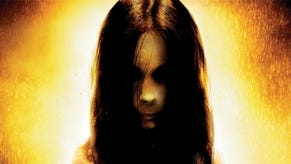F.E.A.R. 2: Project Origin Triple-Format Face-Off
Things that go bump-mapping in the night.
With the blood barely dry on the walls surrounding last week's F.E.A.R. 2: Project Origin review, it's time to return to Monolith's F.E.A.R. 2 with more critical comment, combined with a technical analysis on all available versions of the game.
But first, let's remind ourselves briefly of Kieron Gillen's conclusions about the game itself, partly to refresh memories, and partly to dodge the inevitable lower-page battle between that stupid sticky-out advert and the full-width video just over the horizon:
"It's a checklist of genre-tropes, well performed. If you're just looking for more well-polished shooting, this will while away the hours pleasantly enough. If you've never played a first-person shooter before, you'll probably be in love - this is as archetypal a corridor-shooter as has ever been made, and there's a reason why it works. But for anyone who's been running down corridors with shotguns for most of their adult life, this is so uninspired that you worry for the spark of Monolith's soul. You guys made No One Lives Forever, remember? You're smart. You're better than this." FEAR 2 isn't terrible. That's the most terrible thing of all. Is mere competency enough to garner gamers' love? I don't know. But it's the one thing I really do fear.
Here, it's the usual form: lossless digital captures give you the full picture on what's going on, taking the form of video presentations and full 720p resolution shots in our beautiful comparison gallery, available for your viewing pleasure right through the magic blue words. Switch between the same scene from each version of the game at the press of a button. Try it, it's fun.
But to get the ball rolling, here's our usual h.264-powered comparison video, played back via the digital wonder of the excellent Eurogamer Flash player. Be sure to have the 'high quality' option enabled. Again, as is usually the case, one pixel in the player equates to one pixel on your HDTV, with the video slowed down to ensure that as much detail as possible is retained.
A montage of clips from F.E.A.R. 2 on console, played back at 50 percent speed. Check Eurogamer TV for the equivalent Xbox 360 vs PC face-off video, and the PS3's shot at the title.
In common with most multi-platform titles these days, in terms of the actual content there's little to tell these games apart, whether you're gaming on PC or console. You're getting the same art, the same levels, and the bare bones of the gameplay are essentially identical on each format. The days where we'd be picking out the missing environments and dodgy textures on PS3 are thankfully a thing of the dim and distant past (disregarding Quantum of Solace for a moment). The advent of DualShock 3 means that even the active feedback of rumble is essentially consistent across the consoles.
So what you're left with are the usual suspects. The Xbox 360 game looks nicer, owing to its full-on 4x multisampling anti-aliasing - the best that the console is able to produce - up against the more usual lack of edge-smoothing on PS3 cross-platform titles. A more subtle difference is the inclusion of ambient occlusion on Xbox 360, seemingly absent on PS3. Consult all-powerful Internet oracle Wikipedia if you want, but the bottom line is that AO helps deliver more depth and realism to any given scene, although its impact on the look of F.E.A.R. 2 is fairly limited when comparing one version to the other.
On a more incidental note, the presence of what seems to be macro-blocking indicates that PS3 is using movie-playback for some of its cut-scenes - for example, the nuclear blast at the beginning of the game. They're either being generated by the engine on PC and 360, or else the movies are being encoded to a much higher standard on those platforms, which seems unlikely.



